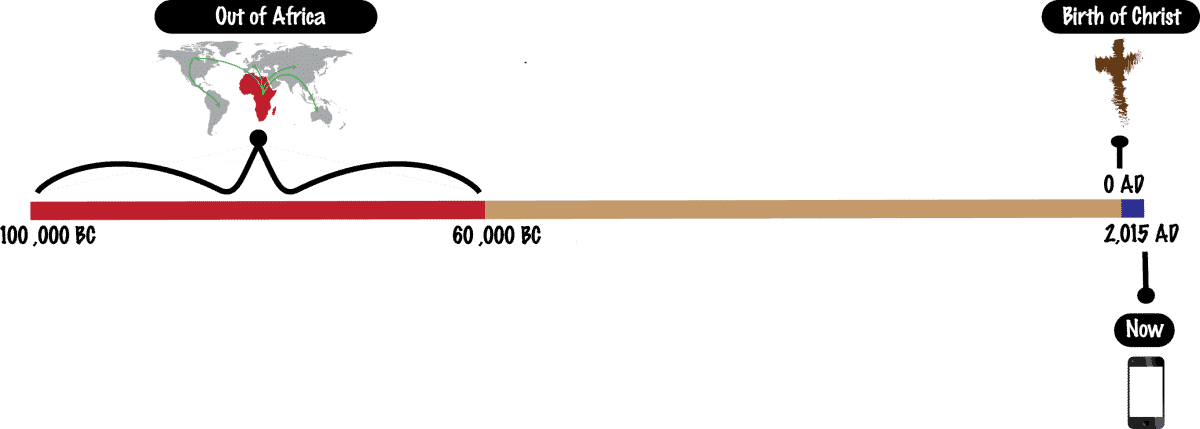As a teacher, would you like to have even more impact on your students’ learning than you do already? If so, then this article on high-impact teaching strategies is for you.
Research shows that most of the teaching strategies that you use have a positive impact on students’ learning. Yet, some teaching strategies have a much larger effect than others. These are known as high-impact teaching strategies.
The 6 Strategies Explained
Teaching Strategy 1 – Using Visuals in Your Explanations
Teachers have more impact when they clearly explain unfamiliar concepts to their students. Giving clear explanations is also a core part of the I Do, We Do, You Do and teacher clarity models. Research shows that if you use visuals to support your explanations, you have a larger effect on your students’ learning. This effect is due to the fact we take in visual and auditory information differently. It is known as the modality effect.
Using visuals this way is a high-impact teaching strategy.

For example, students may be learning about the Out of Africa theory. This theory claims that our species (Homo sapiens) started in Africa – a long time ago. I could use words to explain that this happened somewhere between 60-100 thousand years ago. While showing this visual at the same time.

The combination of words and the visual is far more powerful than words alone. For more information, have a look at our article How to Use Visuals & the Modality Effect to Improve Student Learning.
Teaching Strategy 2 – Concept Mapping
The second high impact teaching strategy in this article is concept mapping. In an earlier article, on 10 Evidence Based Teaching Strategies, I talked about organising information in a graphical way. Concept mapping is one way to do this that has its own body of supporting research.

Research also shows that the effect size is larger when your students make their concept maps.
A concept map has 3 main parts:

You can download an example of a more comprehensive concept map here.
Concept mapping is also a potent learning strategy.
See also: How to Use Concept Mapping in Your Classroom: The Complete Guide
Teaching Strategy 3 – Worked Examples
A worked example is simply a demonstration of the steps involved in solving a problem. A meta-analysis of available research showed that providing students with worked examples had a large impact on student learning.

However, not all worked examples are equal. For example, those that show faded solution steps are more effective than those that don’t. Fading involves presenting a completed example, followed by several incomplete examples. It takes place in the we do phase of the I Do, We Do, You Do model. Each incomplete example requires the students to do more of the work themselves.

Furthermore, worked examples work best when you are teaching procedural knowledge, such as a series of steps. Under these conditions, using worked examples is a high-impact teaching strategy.
Teaching Strategy 4 – Plenty of Practice
Your students need to practice doing the things you want them to be able to do. Such practice helps them to cement procedural knowledge into their long-term memories. But what sort of practice works best?
Research shows that practice works best when it is spaced out over time, rather than done in one sitting (massed).

However, the research is less clear about the role of interleaved practice.
Then, there is the idea of deliberate practice. The research on deliberate practice focuses on excellence in domains such as golf, the violin and chess. It doesn’t validate the use of deliberate practice in a classroom environment. For more details, see my articles on:
Teaching Strategy 5 – Feedback
Practice is more powerful when you follow it up with feedback. Practice without feedback can lead to your students repeatedly practising doing the wrong thing. By giving your students feedback, you empower them with practical ways to improve.
Feedback involves:
Several meta-analyses show that feedback remains a high-impact teaching strategy that you can use to improve your students’ performance.

Teaching Strategy 6 – Classroom Discussion
Classroom discussion is the sixth and final high-impact teaching strategy in this article. A meta-analysis found that classroom discussion had an effect size of 0.82.

Yet, it is not as simple as it sounds. This strategy refers to specific forms of discussion that you can use to improve your students’ understanding of what they have read. These high-impact forms of classroom discussion include:
Furthermore, different forms of classroom discussion are more effective at developing different levels of comprehension (e.g. literal, inferential, critical).
To Sum Up
The 6 high-Impact teaching strategies in a nutshell:
- Use visuals in your explanations
- Have your students to make concept maps
- Provide worked examples for multi-step problems
- Give your students time to practice doing new things – and space it out
- Offer your students feedback on their performance
- Use classroom discussion to help students gain a better understanding of texts
Note, you should not automatically ignore teaching strategies that have a lower impact. Quite often these lower-impact strategies work in tandem with others to produce larger effects.
Generally, you should avoid low-impact strategies that replace high-impact teaching strategies. For example:
However, there are times when you must also match your teaching to where your students are at. Students who:
High-Impact Teaching Strategies FAQs
An evidence-based teaching strategy is an approach to teaching that has a proven impact on student learning. The strength of evidence is based on the quality of the supporting research, the type of supporting research and the number of studies supporting it.
High-impact teaching strategies are approaches to teaching that research shows have a higher-than-average impact on student learning. Researchers often use common measures of effect size (e.g. d or g) to determine how much impact a particular strategy has.
